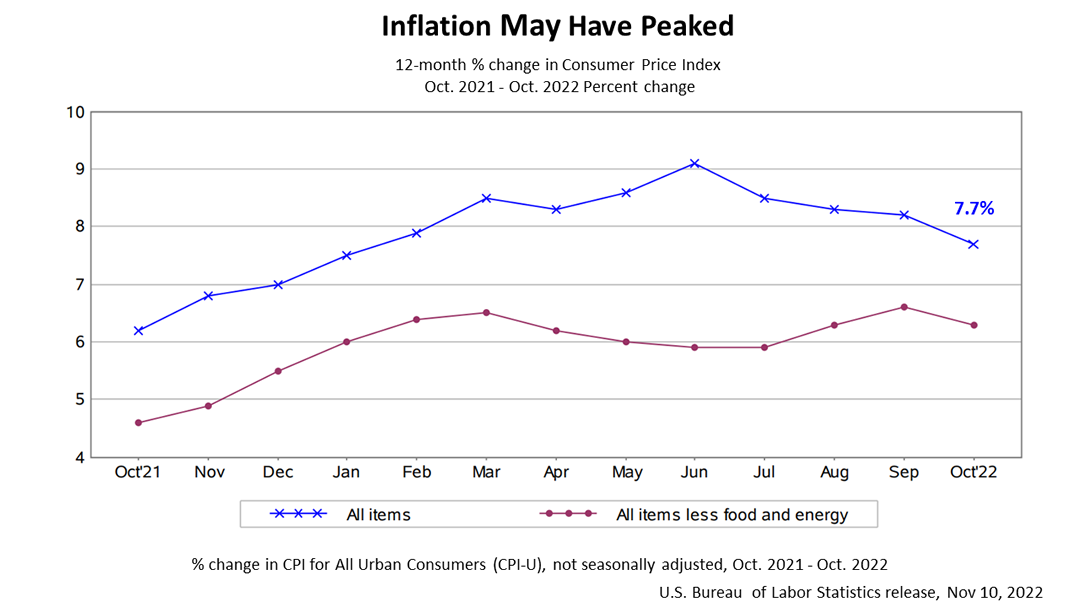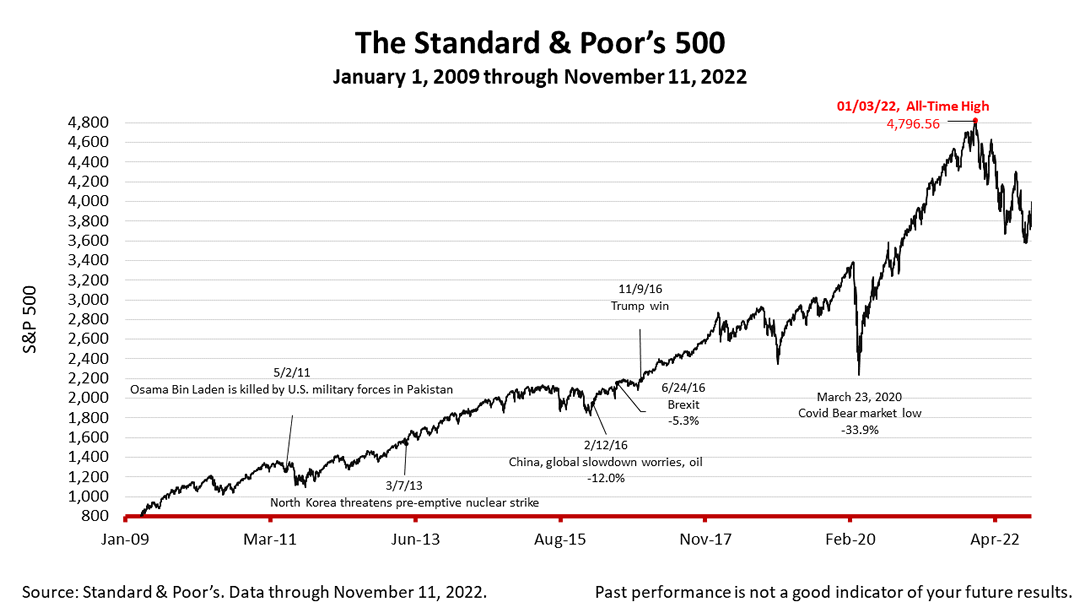Buoyed by better-than-expected inflation data, the Standard & Poor’s 500 stock market index gained +5.5% on Thursday and added nearly 1% more on Friday.
While the 12-month trailing inflation rate, as measured by the Consumer Price Index (CPI), may indeed have peaked, the end of the post-Covid inflation crisis of 2022 is not over. The Federal Reserve plans is expected to raise rates in December and again in January, though the 75 basis-point increases of the last four months may drop back to 50.
The S&P 500 stock index closed Friday at 3,992.93 gaining +0.92% from Thursday and +5.9% from a week ago. The index is up +78.46% from the March 23, 2020 bear market low and -16.75% lower than its January 3rd all-time high. The S&P 500 fell into a bear market on June 13, 2022. No one can time the market reliably over the long run. However, it’s possible that stocks have already begun a new bull market, but more bad news is also expected to cause more Fed rate hikes, higher joblessness, housing starts to decline, and the cash cushion Americans have been sitting on following the pandemic stimulus payments to be spent down in 2023.
The Standard & Poor's 500 (S&P 500) is an unmanaged group of securities considered to be representative of the stock market in general. It is a market-value weighted index with each stock's weight proportionate to its market value. Index returns do not include fees or expenses. Investing involves risk, including the loss of principal, and past performance is no guarantee of future results. The investment return and principal value of an investment will fluctuate so that an investor's shares, when redeemed, may be worth more or less than their original cost. Current performance may be lower or higher than the performance quoted.



